Wenda Sheard: Politician for the People
Posted: January 21, 2024 Filed under: Uncategorized | Tags: news, ohio, politics, u-s-news, usa 2 CommentsA Letter to Washington County Democrats
From: Wenda Sheard, Democratic Candidate for State Representative in the 94th Ohio House District. Paid for by Friends of Wenda Sheard
Note: For elections starting in 2024, the 94th Ohio House District includes all of Washington County, all of Meigs County, and part of Athens County.
Who am I?
I’m an attorney and trained mediator with a PhD in political science, who first moved to Athens in 1979. I’ve taught part-time at Ohio University, and I’ve taught in middle and high school positions in the USA, China, and England. Although I have not held public office myself, I’ve worked as an attorney for 22 years in Ohio courts directly under both Republican and Democratic judges, including serving as the Hocking County Domestic Relations Magistrate for nearly three years recently.
I’ve used my PhD to work as a researcher—one year researching the effectiveness of educational programs in a community college, and another year being the lead researcher of a project funded by the U.S. Department of Labor to research the educational and workforce pipelines of people with disabilities. While working on my PhD, I served as lead field researcher for a project exploring civic tolerance levels of students in public, private, and parochial schools.
My husband, retired science teacher Richard Thieret, and I live on a tree farm in Ames Township, Athens County. Our three children were all born at O’Bleness Hospital in Athens. We’re lucky to be grandparents to four little ones.
Why am I running for State Representative?
I’m running for State Representative because our current legislature has lost the ability to focus on the difficulties facing Ohioans. The August and November 2023 elections prove that point. We need a legislature willing to focus on the difficulties facing Ohioans in their homes, schools, and jobs.
In our district, we have hungry families, underfunded schools, lack of affordable and reliable internet and phone service, inadequate supplies of affordable housing, drug addiction, and long wait times to see medical specialists. Along with the rest of the world, we have the threat of climate change—a threat so horrific that most people avoid even thinking about it.
On the economic front, we have big corporations with wages set so low that families must rely on the government for food assistance and healthcare. We have unions that the Ohio legislature attempts to weaken, most recently with Senate Bill 83.
The latest available figures show that Athens County and Meigs County are ranked 83rd and 84th in Ohio in terms of per capita income among Ohio’s 88 counties. Washington County ranks 40th among Ohio counties, but the per capital income in Ohio as a whole isn’t pretty—1969 was the last year that the per capital income in Ohio was above the national average.
I’m also running because I believe voters should have a choice on their ballot. If we don’t have choice, then instead of elections, we have coronations.
How do I plan to address issues?
I plan to address issues facing the people of our district by listening to those who are suffering, by brainstorming solutions with a variety of people, and by collaborating with other legislators, including those across the aisle. I hope to convince people of both political parties that we need to focus on shared values, not political posturing.
For example, because most of us believe abortions should be rare, let’s work together to improve access to birth control, to lift Ohio families out of poverty, and to attract obstetricians to practice in Ohio’s rural areas so fewer people choose abortion.
How can you help?
I would love invitations to gatherings in Washington County where I might listen to people, whether in public places, in your home, or elsewhere. Please spread the word about my candidacy to your friends and neighbors. Thank you!
And yes, I need to raise money. Please donate as you are able, and encourage others to donate. My ActBlue account is: https://secure.actblue.com/donate/friends-of-wenda-sheard-1
Thank you!
Wenda

Paid for by Friends of Wenda Sheard.
2020 The Year of Zoom
Posted: December 1, 2020 Filed under: Uncategorized Leave a comment
The theme of the Hoagies Gifted Education Page December 2020 Blog Hop is “2020 The Year of _____.” Each blogger filled in whatever word best describes their year. For me, that’s Zoom. In a big way. So big, in fact, that my blogger buddies successfully lured me back into the blogging realm by suggesting I write about Zoom.
During our Thanksgiving service at church this morning, by Zoom, it occurred to me that: (1) I’m surprised I enjoy staying home nearly all the time, and (2) my previous fear of staying home was a fear of being unable to interact with others, and (3)—-and here’s the kicker—-I wouldn’t be half as happy during this 2020 pandemic if it weren’t for Zoom contact with two-dimensional people.
By the middle of March, when the pandemic was in full force in Ohio, I had not yet retired from my job as a domestic relations magistrate in a small Ohio county. When I looked at the scary new world around me, I wanted to retire immediately. But I knew that if I had retired then, I would have been shirking my duty as an officer of the court to keep the courts open and operating despite the pandemic. Retirement then was not an option.
Many courts closed their doors to the general public back in March, and some closed again within the past two weeks for the same reason. The Ohio Supreme Court has continually made it clear to judges and magistrates that despite the pandemic and courthouses doors being closed to the general public, courts have a duty to be available for victims of domestic violence. Courts also need to hear other emergency cases, such as emergency custody actions involving children, and motions for temporary orders that might be needed in a divorce or other type of case. Closing courts 100% is not an option in a civil society.
One of my first pandemic tasks was to help draft a grant proposal for the Ohio Supreme Court’s emergency grant program designed to help courts buy whatever technology they needed to operate remotely. Courts turned in their proposals within days of the program announcement, and grant money was dispersed in record time. Our court purchased laptops and other necessities for operating remotely. More importantly, we purchased a Zoom subscription.
I continued going to work from late March until the end of May even though our courthouse was closed to the public. I felt safe from the pandemic when I sat in my courtroom alone, conducting hearings remotely via Zoom. A few times I worked from home, and conducted Zoom hearings from our guest room. For those occasions, I created a royal blue Zoom background including the great seal of the State of Ohio to hide my cats during the proceedings. Why royal blue? To match my blouse. You can do that with Zoom–not only make yourself pretty, but also make your background pretty.
The hearings I conducted by Zoom were interesting not only on my end, but also on the other ends. I saw all sorts of real backgrounds, including an outdoor shelter house, a playground, kitchens, lawyers’ offices, and even the inside of a tractor-trailer cab during the driver’s work hours. I was glad the driver kept his eyes on the road, but disappointed that the jostling of the truck jiggled his camera to the point where I got slightly dizzy watching the Zoom screen during that hearing. Such is Zoom life with a jiggling camera.
I noticed that Zoom increased the comfort level of those participating in divorce hearings. I figure that’s because during an in-person hearing, you sometimes have people giving each other icy stares and cold shoulders and walking past each other in order to sit down quickly in hopes of avoiding eye contact and all manner of unpleasant behavior from the opposing party. In a Zoom hearing, by contrast, it’s hard to surreptitiously play “not nice” when everyone can see everything you do on camera and hear everything that anyone else can hear.
Also, in a Zoom hearing, you can sit in your favorite chair, and drink your favorite tea or other beverage. You can even slyly check your cell phone for the latest social media updates when you’re bored. That is, unless you’re the magistrate. I had to keep my eyes on the screen at all times, except when I had to jot down notes.
I used Zoom in 2020 for more than court purposes. In addition to the court’s Zoom account, I have passwords for three other Zoom accounts. One is for our church, which put its services, its committee meetings, and even its annual meeting online this year.
I also use Zoom for our League of Women Voters chapter, which did all its committee work by Zoom starting last spring, and even held candidate forums via Zoom this fall with generous assistance from the City of Athens.
As do millions of other people, I have a free personal Zoom account. I’ve used that account for all manner of volunteer work as well as for visiting with friends and relatives in 2020.
One of my most rewarding uses of Zoom has been working efficiently with three other women on the issue of natural burial starting in April 2020. The four of us did all manner of planning, data gathering, and researching via Zoom. We even wrote an article for the Ohio Township Magazine about the legality of natural burial in Ohio, and about our work—-remote of course!—with townships all over Athens County in hopes of convincing them to change their cemetery rules to allow for burials without vaults and without caskets. Fun fact: I didn’t met one of those three women in person until a socially-distanced outdoor meeting in September.
Our natural burial group used Zoom not only for our own meetings, but also when we spoke to online university classes, held a public meeting, and presented at a church service. Recently we’ve joined forces with other groups—-by Zoom of course—-to explore the possibility of starting a conservation burial ground in our area of Ohio. And we’re planning to give a presentation during a public body’s meeting, which meeting will be by Zoom, of course. And we’ll use Zoom to screen share our presentation, of course.
Zoom has allowed my family to meet more than it has before the pandemic. I believe I’ve been more in touch with my sisters and my cousins since the pandemic than I have in years past. My children have called me and my husband more than usual, too, sometimes to subtly remind us that we’re old and thus need to take extra precautions during the pandemic. Nice of them, eh?
Thanks to Zoom and similar technology, some organizations have seen record attendance at their online conferences. The Climate Reality Leadership Corps had 3,300 attendees at their latest training in August 2020. When I attended the same training in October 2017, there were only 1,300 people attending in person. Zoom allows for far greater attendance, at far less cost.
Our Unitarian Universalist Association General Assembly had far greater attendance online this year than ever. For the first time, all sessions were recorded and made available to all Unitarian Universalists, whether or not they attended General Assembly. Nice bonus, right?
At beginning of the pandemic, the Ohio Supreme Court offered weekly webinars for judges and magistrates, geared not so much to teach us, as to help all of us, together, figure out how to reinvent the court system in the age of the pandemic.
Early in that series of weekly webinars one thing became clear. A lot of technology changes induced by the pandemic had been contemplated for years. Folks who advocated unsuccessfully prior to 2020 for changes, such as remote access to court records and video appearances, were amused by how quickly previous naysayers jumped out of the way and let technology surge forward in 2020. This year, more than ever before, the feared future of technology fell upon us, and surprise surprise, we’re ok—we learned the technology, and the technology is working.
Courts no longer need to require people to appear for in-person hearings for things such as divorces, expungements of criminal records, or modifications of child support. At least during the current pandemic, those hearings can be held online, with a reduced carbon footprint, and a reduced loss of work time for litigants and witnesses.
There’s no question in my mind that 2020 is the Year of Zoom. For the Ohio court system, for religious congregations, for civic organization, for families, for schools, and even for my book club, 2020 clearly has been the year of Zoom. I believe Zoom and its technology siblings are positive forces that will be with us for decades to come.
This blog post was part of the Hoagies’ Gifted Education Page December 2020 Blog Hop. Please visit my fellow bloggers. Complete list is here: www.HoagiesGifted.org/blog_hop_2020_year_of.htm
My Mom Taught Me To Tattle: Speaking Up in the 1960s and Today
Posted: June 16, 2020 Filed under: Uncategorized Leave a comment
“Tattle” – to report another’s wrongdoing
Mom and the 1960s
When I was 13 years old, back in the 1960s, my mom took me with her to rent an apartment.
We already had a house. We didn’t need another place to live. She told me to pretend we did.
Our white bodies met the apartment manager. He showed us the apartment. As Mom instructed me earlier, I mentioned a non-existent 15yo brother, saying how he would love a certain bedroom.
Then Mom rented the apartment. She wrote a check for the deposit and the first month’s rent, and she pocketed a receipt and rental agreement.
As soon as we left, Mom burst into tears. Why? Because earlier that day a Black family of the same configuration—single mother, 13 year old girl, and 15 year old boy–were told there were no apartments available in that building.
Tattling
Mom tattled on the apartment manager. Mom’s testimony, her cancelled check, and that receipt got the apartment manager and the apartment owners in trouble.
Mom taught me to tattle if any kids in our purposely integrated neighborhood used a derogatory racial slur on the playground. For information about our special neighborhood, see this 2004 NPR story about an ABC documentary.
Mom taught me to tattle whenever I saw people attack other people on the street.
Mom taught me to tattle whenever I saw a theft in progress.
Mom taught me to tattle whenever I suspected child abuse.
Mask-Wearing & The Pandemic
What would Mom tell me today, in the middle of a pandemic, when stores are having great difficulty getting employees to obey state health department mask-wearing orders?
You guessed it…Mom would tell me to report the wrongdoing. Just as she taught me to report civil rights violations and crimes, she would want me to report failures to follow public health orders.
Given the lessons Mom taught me in childhood, I was surprised when after announcing my intention to report public health violations, and urging other women to do the same, I received a social media earful about the evils of telling on others. Some told me that it’s even worse to collect proof of violations, e.g. photographs.
Irony
I am pleasantly amused by the irony that resulted from the controversy. Some women who despised my plan did exactly what I hoped, which is to warn everyone that people are going to start taking photographs. I suspect those warnings, which echoed through local social media, will by themselves improve mask-wearing compliance more than any other strategy.
And there’s the irony of people saying how bad it is to report others to their employers, while at the same time blaming generations of police for not telling on their racist and violent colleagues.
And the irony of people caring deeply for employees who disregard public health orders, but seemingly not caring for health-compromised shoppers, or for elderly employees who need to keep working side by side with coworkers who disregard the health orders.
And the irony of people wanting police to wear body cameras, but not wanting a store manager to look at photographs provided by shoppers or the store’s own security footage to find evidence of health department violations among employees.
Critical Caveats
If Mom had lived into the 21st Century, she would have changed her terminology from “tattling” to “speaking up” or “speaking out.” She also would have added some critically important caveats to her lessons.
First, it’s critically important NOT to call police to report things that aren’t wrongdoings. Too many people have called the police after seeing the color of a person’s skin and assuming that the person is a threat. That kind of racist reporting needs to stop, and should have stopped long, long ago.
Simply put: When there’s no wrongdoing, don’t report.
Also, it’s critically important to be aware that there are alternatives to calling the police about wrongdoing, and those alternatives are critically important in some communities.
For instance, just yesterday a Black minister friend of mine, Rev. Jé Exodus Hooper, chose to peacefully intervene in a domestic violence situation involving a Black couple in a large American city, rather than calling the white dominated police force in that city.
It’s also critically important to recognize that individual misbehavior often results from larger systemic problems.
For example, store managers might be failing to provide adequate training and information to employees about mask-wearing. State health departments may not have sufficiently fine-tuned their mask-wearing orders to account for situations involving high temperatures, long hours, or other factors. Management should be held accountable for management failures. State health departments should be held responsible for making their mask-wearing orders sensible and enforceable. Accountability should happen at multiple levels.
Lastly, it’s important to remember that we are in the middle of a pandemic. Now more than ever we must take care of ourselves and our communities, we must keep our hearts open to learning from others, and we must stay true to our deepest values. We must also be aware that this pandemic is affecting communities of color more severely than it is affecting other communities.
Conclusion
Let’s not stay silent in the face of wrongdoing. Staying silent is not an option when lives are at risk, whether they be lives at risk due wrongdoing by people or by systems in our society, or lives at risk due to the current pandemic.
Let’s continue to explore the best ways to speak up, the best ways to solve systemic problems in our communities, and the best ways to teach our children the importance of not staying silent.
“My silences had not protected me. Your silence will not protect you. But for every real word spoken, for every attempt I had ever made to speak those truths for which I am still seeking, I had made contact with other women while we examined the words to fit a world in which we all believed, bridging our differences.”
Audre Lorde (1934-1992)
from her essay The Transformation of Silence into Language and Action
in her book Sister Outsider.
Thank you to all who gave me feedback on the mask-wearing issue and on drafts of the article. In the spirit of Audre Lorde, you helped me better fit my words into a world in which we all believe, bridging our differences.
SAT and ACT Preparation Hints by Wenda
Posted: August 8, 2019 Filed under: Uncategorized 1 Comment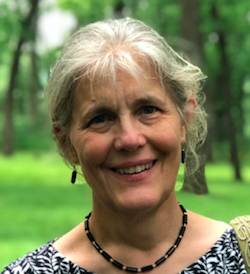 The morning, after a long absence from blogging, I found myself replying in a blog-like fashion to a simple query on a local Facebook group for mothers. Because high schoolers and their parents are now thinking back-to-school and many likewise are thinking SAT/ACT prep, here you go. Comments welcome.
The morning, after a long absence from blogging, I found myself replying in a blog-like fashion to a simple query on a local Facebook group for mothers. Because high schoolers and their parents are now thinking back-to-school and many likewise are thinking SAT/ACT prep, here you go. Comments welcome.
For a couple years, 2007-2009, I spent time as a high-priced SAT tutor, like $100-$125 an hour, in Connecticut outside NYC.
Antidotes to Anxiety
But guess what? Even though I thoroughly enjoyed working as an SAT tutor, I’m actually OPPOSED to forcing standardized testing on students. Here’s one of some cartoons I created several years ago to protest standardized testing:

Bottom line: I refused to work for parents whose aim was to raise their child’s SAT scores. I only worked for parents who understood that children must be given a choice about whether to work on raising scores, or whether not to work on raising scores. You can’t force a child to learn. Also, I also worked only for parents who believed, and who let me tell their child, that there are plenty of good colleges that don’t require SAT or ACT scores. Unless the parent allowed me to introduce the child to Fair Test: The National Center for Fair and Open Testing, and its list of SAT/ACT-optional colleges, I wouldn’t let the parent hire me. Unless the parent was open to allowing the child to consider a large variety of schools, both selective and non-selective, I wouldn’t let the parent hire me.
What I learned: When parents and I successfully convinced students that SAT scores are not a life-or-death endeavor, but rather an opportunity to play a testing game and, more importantly, an opportunity to learn a lot of vocabulary that will help immensely regardless of which college the student attends, as well as an opportunity to review math and grammar rules, the student relaxed, enjoyed the tutoring, and approached the test day with little or no anxiety.
Vocabulary
When I was last teaching, we used the very best online vocabulary system I had ever seen. My students totally loved it. It’s called Membean. Although we bought a subscription for the whole school, parents can buy subscriptions themselves here for as little as $6 a month if you sign up for one year.
Membean is SO VERY GOOD because works like our brains work best… With showing students the words they haven’t yet learned, teaching them words using multimedia stories, highlighting words’ relationship to other words, and the like.
I’ve had motivated seventh graders soar to the top of the Membean program (end of high school, through all the SAT prep words) in as little as four months. It’s especially good if you have a group of motivated students sign up together, because they’ll probably compete against each other and they’ll celebrate their Membean accomplishments together. No, I don’t own stock in Membean, but I reckon I should have invested in Membean years ago.
Grammar
During the five years I taught middle school English from 2009 to 2014, in England of all places, my after-school grammar club was one of the most popular clubs in the school. I totally *love* teaching standard English grammar, as well as explaining why it’s ok to deviate from standard English grammar if we recognize the effect each deviation will have in the conscious and subconscious mind of our readers.
In grammar club, we played all kinds of games including being parts of speech and linking arms with others. Actually, thinking back on it, I think the “linking arms” games might have been the reason grammar club was so popular—imagine giving middle schoolers an opportunity to link arms with someone to whom they were sexually and/or romantically attracted. But I digress…
After I retire for a second time, whenever that might be, I might offer another grammar club for students in my hometown who want to knock the socks off the SAT and ACT, as well as jump start their writing to levels I saw in only 10% of recent law school graduates when I was a lawyer helping to hire new lawyers and reviewing their writing samples.
I admit it: I’m a grammar nerd. And I totally love transmitting that nerd-dom to children because when I do it, I find smiles on their faces. Oh, and I’ve given workshops to teachers both in Europe and in the US about how to teach grammar with fun and movement. If your teachers want a workshop or a guest speaker, let me know, ok?
 How can your student learn grammar without a good grammar teacher? I recommend the book Eats, Shoots, and Leaves, as well as the book Sister Bernadette’s Barking Dog: The Quirky History and Lost Art of Diagramming Sentences. Total price of both in new paperbacks: $20.94. But, don’t buy them until your student BEGS for them, to make sure your student WANTS to learn from them.
How can your student learn grammar without a good grammar teacher? I recommend the book Eats, Shoots, and Leaves, as well as the book Sister Bernadette’s Barking Dog: The Quirky History and Lost Art of Diagramming Sentences. Total price of both in new paperbacks: $20.94. But, don’t buy them until your student BEGS for them, to make sure your student WANTS to learn from them.
Let me know if you find a great online grammar video learning system, ok? I would love to find one that’s FUN and MULTIMEDIA, and problem-solving oriented, and oriented to “how-goofs-cause-the-reader’s-mind-to-stumble-for-a-microsecond-and-thus-must-be-avoided-unless-you-intend-to-stumble-your-reader’s-mind.” Thanks in advance!
Math
I admit it: I’m also a math nerd, and totally enjoy teaching math. And I want all children to totally enjoy *learning* math.
When my husband, a career science teacher, was tasked with teaching geometry one year, we invented a hands-on, experimental geometry course that had the students “discovering” geometry rules, science-like.
When tutoring math for the SAT and, once upon a time, for the GED at a school for at-risk students, I found it incredibly fun and effective to teach math as a hands-on activity. For instance, teach angles of squares and rhombuses by taping together rulers and see how the angles change from 90 degrees (square) to all sorts of degrees when you slant the square into various rhombuses. Watch how the two opposite angles always match, and how as one pair gets smaller, the other gets bigger, and how the total of the four angles is always 360 degrees. Fun, eh?
Algebra can be equally fun. You can buy or make your own algebra tiles, and check out the many Kahn Academy algebra videos. Would you please let us know your favorites in the comments? Thanks.
Conclusion
Now, *that’s* how to prepare to the SAT. Relax, boost vocabulary, learn grammar, and play with math. Above all, have fun!
P.S. I’ll leave you with a photo of the T-Shirt that some of my students, with appreciation, designed for themselves and proudly wore at the end of a school year. The T-Shirt sold like hotcakes after the first few were distributed–we had to order a lot more!

A Poignant Letter From Two Parents: For Today, International Transgender Day of Visibility
Posted: March 31, 2017 Filed under: Uncategorized Leave a commentToday, on International Transgender Day of Visibility, I present a poignant letter that two friends of mine emailed me and others earlier this week. I am honored that my friends gave me permission to post their brilliance here for the world to see.
Dear Friends,
We are sending this letter to share some news with people who know our family. We love you and count on your love, intelligence, and open-mindedness.
The news is that our child John is a transgender girl. [All names have been changed to protect the privacy of the family.]
Life is a wonderful journey which sometimes takes an unexpected turn, but everything eventually works out for the best, and we find ourselves exactly where we are supposed to be. Everybody has his/her/their own path. Going through the process of learning, understanding, and embracing this new reality has made our family stronger and brought us much closer together. We want you to know that we are happy! Happy for our daughter, who is now in tune with her true self and feels more confident and happy. Happy for the boundless love that we share. We fully support our brave and beautiful child and we hope that you will too.
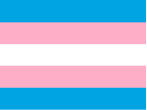 She has chosen the name Janet. Please kindly use that name and feminine pronouns (she, her) when addressing her or talking about her. You will likely slip occasionally – we know, we did, and still sometimes do. It’s okay. We now use the name Janet and speak of her as a girl even when we talk about her childhood. She has always been a girl, but we just didn’t realize it.
She has chosen the name Janet. Please kindly use that name and feminine pronouns (she, her) when addressing her or talking about her. You will likely slip occasionally – we know, we did, and still sometimes do. It’s okay. We now use the name Janet and speak of her as a girl even when we talk about her childhood. She has always been a girl, but we just didn’t realize it.
This is not a family tragedy, which may be the first reaction for some people, and there is absolutely no shame in being transgender. It really helped that we held socially liberal views before and didn’t need to break out of a mental prison of prejudice to find acceptance. We are concerned, of course, that not everyone may be as open-minded and that could make our daughter’s life more complicated. As any normal parents, we will do our best to protect her, although she is an adult and is strong to stand up for herself. We hope that everyone will understand that this is not an illness and not a lifestyle choice. What’s happening is a positive change that will improve our daughter’s quality of life. We are glad that she has found her true gender identity. This revelation is a blessing, not a curse. We are certain of that.
Transgender individuals don’t want to be defined only by their gender identity, just like all of us. This year, we’ve made friends with some wonderful, kind, caring people in the LGBTQ community and were touched by their personal stories. Our child is unique in many ways and this is one of her many traits, alongside her brilliant intelligence, her curiosity, her kindness and compassion, and her somewhat dark sense of humor. Living her life as a girl won’t change any of that.
We don’t expect or demand any special privileges or bonuses for Janet. Now that she knows who she is, it should be easier for her to chart her life course and achieve what she sets to achieve. She likes her privacy, so please respect that. We are sending this letter to prevent gossip and misunderstanding. It’s a one-time announcement to keep people who know us aware of the change and to increase awareness and understanding of the subject.
If you need to absorb our news and learn more, then please take your time. When you are ready, please let us know how you feel, send an email (even a short one), call us if you like, say a few encouraging words to Janet next time you see her. We cherish your friendship. We know that you may have questions and may be hesitating what is okay or not okay to ask, what is the proper etiquette, and how to be supportive. Some people may feel uncomfortable at first, but find acceptance over time. Please don’t worry! We’ll help with information and answer your questions.
Recognizing that this topic may be new or somewhat confusing for many people, let us provide basic facts that we have recently learned ourselves, with hopes that it may be useful.
Nature in its amazing complexity creates people with a great variety of physical traits. We come in different shapes and sizes, colors, genders and we celebrate our uniqueness in this world. Gender identity is one of many dimensions by which we differ. Most people are comfortable with belonging to their birth gender, while some feel strongly that they need to be the opposite gender, or both genders, or no gender, or that their gender varies over time. Transgender people feel that their true gender identity is different from the one assigned to them at birth and experience gender dysphoria – a distress caused by the societal pressure to live as a gender that feels wrong to them. Some of them recognize these feelings in childhood, while some don’t recognize or don’t admit them until they become adults. Scientists can’t currently explain why this happens, but there is a strong scientific and medical consensus that it’s not a result of parental or societal influence, not an illusion, not a choice that someone makes, and it’s not a physical or mental illness. Our gender identity is somehow programmed before birth and can’t be unlearned or reprogrammed.
The problem is not being transgender, but trying to deny it to yourself or hiding it from other people, because it takes a high psychological toll. The only solution that has been consistently demonstrated to work is accepting and embracing one’s true gender identity and transitioning to it. There isn’t one standard way to transition. Most transgender people change their clothes and appearance to look more like their affirmed gender. Some use hormonal treatments and some use gender confirmation surgeries, both of which have become very safe and effective in recent years. It’s incorrect to make assumptions that everyone follows the same path and it’s generally inappropriate to ask specific questions about that, just like it’s impolite to ask your co-workers or neighbors if they are circumcised or what medications they use.
Another problem is societal prejudice and stigmatization of transgender individuals. We believe that this problem can be fixed by providing correct information, because most people are not evil, mean, or cold-hearted, but may be uninformed. Not so long ago left-handed people were punished for using their dominant hand. Not so long ago racism defined who could sit on which bench or go to which college or – worse – who deserved to live or die. But our society is evolving rapidly and becoming better educated and accepting of individual uniqueness and diversity. So, we are very optimistic that reason and common sense will prevail! Just like the rights of gay people have advanced over the last decade and the level of homophobia has declined, we expect that the same will happen with the rights and treatment of transgender people in the coming years. Significant progress has already been made in medical care and acceptance. We are glad that schools now teach students about many aspects of the human sexuality and its nonbinary nature, because it helps to reduce ignorance, discrimination, and unfair stigmatization.
By recent estimates, 0.6% of the adult population self-identifies as transgender. That’s 1.4 million people just in the United States. You likely know some of them, maybe without even realizing that they are transgender.
Terminology:
- Janet calls herself transgender, so please use that term if you must use any term at all. But you probably shouldn’t use it most of the time. Janet is a young woman and it’s not necessary to always prefix it with “transgender” when mentioning her. Although it’s not a taboo to mention it either, just use your best judgement on when and where.
- Transphobia is an irrational fear and hatred of transgender individuals, just as repugnant and harmful as racism, homophobia, or anti-Semitism.
- The opposite of transgender is cisgender.
- Please avoid using words “real” and “normal” when referring to cisgender, because it implies that transgender is somehow not We assure you that Janet is not imaginary. To prove it, we have hugged her and she still feels very real, even if a bit too thin. J
Sexual orientation. This is widely misunderstood. Gender identity doesn’t define sexual orientation. Transgender people may be straight, gay, lesbian, or bisexual, just like cisgender people. Gender identity is who you are (e.g. cisgender, transgender, gender-fluid, agender), while sexual attraction is who you love (e.g. straight, gay, lesbian, bisexual, asexual). One doesn’t define the other and vice versa. When interacting with any person, it’s generally best not to assume their sexual orientation.
 Being a stigmatized minority, transgender people are at a high risk of discrimination and hatred. Those who are treated with the same respect and dignity as cisgender people generally live happy lives. Those who are not accepted by their close relatives and social or professional circle often become depressed and even suicidal. It’s not because they are transgender, but because they are not accepted by parents and friends, forcing them to social isolation, homelessness, and poverty. Any person ostracized by the society would become depressed regardless of their gender identity. If we all become more supportive and accepting, it may literally save lives.
Being a stigmatized minority, transgender people are at a high risk of discrimination and hatred. Those who are treated with the same respect and dignity as cisgender people generally live happy lives. Those who are not accepted by their close relatives and social or professional circle often become depressed and even suicidal. It’s not because they are transgender, but because they are not accepted by parents and friends, forcing them to social isolation, homelessness, and poverty. Any person ostracized by the society would become depressed regardless of their gender identity. If we all become more supportive and accepting, it may literally save lives.
Please remember that transgender is not a disease, not a result of parenting or someone’s influence, not a mental disorder, and not a lifestyle choice. Some people are born that way. And if Nature or God (depending on what you believe in) created them that way, then they deserve the same respect and support as all other people.
Thank you for your love and kindness!
Alice and Michael
P.S. Please check the following links for more information or search for other recently updated non-political reputable sources online.
- Frequently asked questions: http://www.glaad.org/transgender/transfaq
- How to be an ally: http://www.glaad.org/transgender/allies
- American Psychological Association: http://www.apa.org/topics/lgbt/transgender.pdf
- National Geographic’s video episode Gender Revolution (1.5 hours-long): http://channel.nationalgeographic.com/gender-revolution-a-journey-with-katie-couric/videos/gender-revolution-a-journey-with-katie-couric/
The Mysteries of High Intelligence: Bravery Required
Posted: June 1, 2016 Filed under: Uncategorized | Tags: beyond school, embracing mysteries, gifted, intelligence 13 Comments Note: This article is adapted from talks I’ve given in churches in four states. I have declined to give this talk on public school property, mostly because public schools don’t need anyone complaining about their invited speakers.
Note: This article is adapted from talks I’ve given in churches in four states. I have declined to give this talk on public school property, mostly because public schools don’t need anyone complaining about their invited speakers.
Introduction
My rational, scientific husband has had difficulty dealing with my fascination with certain mysteries. When I first told him my topic for this talk, he asked whether he would be able to handle it.
I reminded him that I enjoy reading the Skeptical Inquirer, and I am grateful for the work of “bad science” critic Ben Goldacre in England. We both recognize that science itself is sometimes an iffy proposition: What is considered scientific truth today may change after new discoveries in the future.
For avid researchers who want to delve deeply into the philosophy of scientific change, I recommend reading Thomas Kuhn’s The Structure of Scientific Revolutions (1962), or, for lighter fare, this excellent 50th anniversary article about Kuhn in The Guardian: Thomas Kuhn: The Man Who Changed the Way the World Looked at Science.
Science is not static; scientists seek to solve mysteries, and the solving of mysteries can change our view of the world. The non-rational and non-scientific mysteries of today may be considered scientific truth in the future. 
I don’t usually speak or write about my favorite mysteries. Why? Because it’s risky to speak of non-rational, non-scientifically explainable phenomenon in the rational circles of our society. When we profess belief in mysteries outside other people’s comfort zones, we risk being dismissed or ostracized. Today I feel compelled to speak, nonetheless, because children deserve adults who will respect them and their experiences, however mysterious.
The Mysteries of High Intelligence
The main mysteries I’ve encountered in my life come from my work with profoundly intelligent children. By “profoundly intelligent,” I mean those rare children with intelligence off the charts. Assuming current IQ tests could measure high enough, I mean children with IQs over 160, and some with IQs up over 200. (The outdated WISC IV had extended norms; I have not yet seen extended norms for the WISC V (2014) or any other current IQ test.)
Over the years, I’ve encountered three types of mysteries surrounding profoundly intelligent children:
(1) The mystery of their high intelligence.
(2) The mysteries they experience.
(3) The mysteries they explore during their lives.
In sections that follow, I will discuss each of those three types of mysteries. First, though, I need to say a few words about the nature of profoundly intelligent children.
The Nature of Profoundly Intelligent Children
By “profoundly intelligent children,” I do not mean children who perform well in school. Some do, of course, but intelligence is not solely about verbal and math ability. The same brain biology that makes a person quick in verbal and math realms can make the person quick in emotions, in the senses, and in the physical realm. For more information, see The Gifted Brain (2016) by the team at the nonprofit organization Gifted Research and Outreach, see Developmental and Cognitive Characteristics of “High-Level Potentialities” (Highly Gifted) Children (2011) published in the International Journal of Pediatrics, see Annemarie Roeper’s chapter titled “Giftedness is Heart and Soul” in High IQ Kids (2007), and see Overexcitability and the Highly Gifted Child (2000) by Sharon Lind.
The brain appears to work best as a unified whole. The best  mathematicians use many areas of their brains when solving problems. In mathematically gifted adolescents, the entire brain is involved in the “fast, well-insulated, efficient” biological stuff of high intelligence. See Interhemispheric Interaction During Global-Local Processing in Mathematically Gifted Adolescents, Average-Ability Youth, and College Students (2004) available through the National Institutes of Health. Popular media have perpetrated right-brain, left-brain nonsense, but cognitive psychologist Scott Barry Kaufman upends that misconception with this excellent rant: The Real Neuroscience of Creativity.
mathematicians use many areas of their brains when solving problems. In mathematically gifted adolescents, the entire brain is involved in the “fast, well-insulated, efficient” biological stuff of high intelligence. See Interhemispheric Interaction During Global-Local Processing in Mathematically Gifted Adolescents, Average-Ability Youth, and College Students (2004) available through the National Institutes of Health. Popular media have perpetrated right-brain, left-brain nonsense, but cognitive psychologist Scott Barry Kaufman upends that misconception with this excellent rant: The Real Neuroscience of Creativity.
Profound levels of intelligence affect all parts of the brain and all aspects of a child including academics, emotions, body, and more. The “more” includes many mysteries.
(1) The Mysteries of High Intelligence
In my work with profoundly intelligent children, I’ve heard babies speak full sentences, I’ve met seven year olds successfully taking college courses, and I’ve taught preteens who surpassed doctoral students after just one game theory lesson. I’ve seen five-year-olds read 250-page books. I’ve seen a shocked math teacher remark to himself after an introductory calculus lesson to curious children ages seven to eleven, “I just taught four weeks of math in one hour.” I’ve seen preteens who appear to have been born knowing math; they can pass an end-of-year high school math test without taking the course or looking at a textbook for more than a few hours. I’ve known students who mastered musical instruments so fast that music contest organizers challenged their answers to “how many years have you played?”
The abilities of profoundly intelligent children are mysteries to me. Why and how do extreme levels of intelligence exist in humankind? I do not know. If I had not seen and heard those displays of intelligence mentioned above, I might not have believed them possible.
Because envy pervades our society, bravery is required in order to talk about the seemingly mysterious abilities of profoundly intelligent children. Parents of such children quickly learn to keep their mouths shut, as Juliet Thomas wrote eloquently in Hard Won Truths. For an excellent scholarly article on the topic of envy, see Envy and Giftedness: Are We Underestimating the Effects of Envy? by Catharine Alvarez. I wholeheartedly agree with Alvarez that, “The problem of dealing with other people’s envy is one of the central problems of gifted development.”
Envy isn’t the only problem facing profoundly intelligent children. In his 1869 essay On Liberty, 19th Century philosopher John Stuart Mill recognized that individuals with high levels of intelligence have a tendency to exhibit originality in thought and action, and that originality often exceeds the comfort zone of others:
People think genius is a fine thing if it enables a man to write an exciting poem, or paint a picture. But in its true sense, that of originality in thought and action, though no one says that it is not a thing to be admired, nearly all, at heart, think that they can do very well without it.
Mill explained in his next paragraph, “In sober truth, whatever homage may be professed, or even paid, to real or supposed mental superiority, the general tendency of things throughout the world is to render mediocrity the ascendant power among mankind.”
Fortunately, not all is gloom and doom. Whenever I meet children with high levels of intelligence, I encourage their parents to find other families with children of similar abilities. All children benefit from feeling a sense of belonging, and all parents benefit from having safe places to talk with other parents.
For many profoundly intelligent children, finding true peers is life changing, and possibly life-saving. For more information about the necessity of finding true peers, see Bright Star — Black Sky: A Phenomenological Study of Depression as a Window Into the Psyche of the Gifted Adolescent by P. Susan Jackson, founder of the Daimon Institute for the Highly Gifted. Luckily, the Davidson Institute for Talent Development, the Jack Kent Cooke Foundation, and similar organizations provide financial and other support to many highly intelligent children who need help accessing specialized summer camps, conferences, and other events.
(2) The Mysteries That Profoundly Intelligent Children Experience
Profound intelligence, by itself, is mysterious, and the experiences that some profoundly intelligent children have reported to their parents and others intensify the mystery. In Nature’s Gambit: Child Prodigies and the Development of Human Potential (1986), psychologist David Henry Feldman wrote about mysterious experiences of some of the child prodigies he studied:
During the years I have conducted my study, several of my subjects have reported incidents that have made me reflect on a possible connection between prodigies and unknown forces or influences. This chapter presents some examples of occurrences that suggest that there does remain an element of mystery and uncanniness to the prodigy. Perhaps this element helps account for why prodigies and prophecy have been linked throughout history. (From page 187, Chapter 9, titled “Beyond Coincidence.”)
During the summer of 2001, I led a summer institute workshop for parents of gifted children. I felt comfortable enough with the seven participants to mention unusual experiences associated with gifted children. Surprise, surprise–three of the seven families told me that their children had experiences that cannot be explained by science. The experiences recounted by those families included visits from recently deceased relatives, knowledge of what would happen in the future, and feelings of tragic emotions before the tragedy happened.
After that workshop, my ever-scientific husband reminded me that coincidences exist; I reminded him that mysteries exist, too. Some of the stories I’ve heard over the years include what I call “truth markers”–those little bits of information that a child could not possibly know unless the unbelievable–or at least an exceptionally unbelievable coincidence–had happened.
The tragedies of September 11, 2001, occurred shortly after that summer workshop. In the days and hours before those tragedies, more than a few profoundly intelligent children shared uncanny premonitions of the tragedies with their parents.
I was as mystified by those reports of premonitions as I was horrified by the tragedies themselves. I desperately wanted to understand the premonitions. I wondered whether time itself has “bow waves” like those waves that precede the bow of a ship on the water. I wondered whether profoundly intelligent children, with their extra sensitivities, might have the ability to detect bow waves of time. I questioned my sanity for allowing my wonderings to wander beyond reason.
Fortunately, the unusual experiences that profoundly intelligent children have reported are not limited to tragedies. Some children and teens have reported knowing the minds of others so well that their minds feel connected. Newbery Honor Book winner Stephanie S. Tolan based part of her novel Welcome to the Ark on an experience she had with a group of six profoundly intelligent children whose minds appeared to communicate together in silence during a workshop she offered at one of the early gatherings of families with such children. In an interview available on her website, Tolan recalls: “They didn’t realize they hadn’t talked it out. Their ‘telepathic’ interaction had felt so natural to them that they didn’t even realize they were doing it until I pointed out that not one of them had said a word aloud. I’d been in the room with them the whole time. There was no talking. The process had somehow taken place only in their minds.”
As I’ve searched for explanations, I’ve wondered whether profoundly intelligent children have enhanced senses of intuition. Perhaps an extra strong dose of intuition can mimic what some call “mind reading” and “premonition”? Might information about intuition somehow connect the mysteries with science?
I am a firm believer in intuition. In every field I’ve entered, I’ve run into top professionals who write or speak about the importance of intuition in that field. When I volunteered at the Cleveland Rape Crisis Center in the early 1970s, when I went to law school and practiced law, when I taught in the Ohio University College of Business, when I learned about politics and political science, when I learned about public administration, when I taught high school and middle school students. Everywhere I’ve been, without exception, experts in the field have recognized the importance of intuition.
Even if an extra strong dose of intuition can mimic what some call mind reading and premonitions, might I be able to connect the mysteries with science? Doubtful. Why? Because science knows precious little about intuition.
(3) The Mysteries That Profoundly Intelligent Children Explore
John Stuart Mill, quoted above, wrote that genius, in its true sense, is originality in thought and action. That originality in thought and action extends to explorations of the mysterious.
The history of science has shown that many great discoveries have come from those who were shunned during the discovery process. Galileo was held under house arrest until his death. Darwin was attacked by the churches of his time. Orville and Wilbur Wright felt great skepticism. More than a few Nobel Laureates have suffered forms of ostracism during the initial years of their great work.
Stephen Jay Gould (1941-2002) once quoted another astute scientist as follows, “Every triumphant theory passes through three stages: first it is dismissed as untrue; then it is rejected as contrary to religion; finally, it is accepted as dogma and every scientist claims that he had long appreciated its truth.”
We must support children when they buck the system with new ideas and later when they are threatened with loss of tenure or loss of funding for exploring mysteries that others think are hocus pocus or even the work of the devil. We must teach children about the history of science and the importance of bravery in the face of skepticism. All children deserve adults who believe in them, and adults who help them navigate a world that may be unready to welcome their experiences and ideas.
Two Bits of Feedback: All Children & Other Cultures
When I’ve given this talk to audiences that did not necessarily include parents of profoundly intelligent children, I’ve used my favorite mysteries as illustrations to encourage people to embrace whatever mysteries they have experienced in their own lives. Embracing mysteries involves a combination of belief, acceptance, awe, and integration into one’s own religious beliefs. Two audience responses merit sharing here.
 One woman, a deeply spiritual person with a long teaching career, commented that all children, not only profoundly intelligent children, are capable of experiencing the mysterious until we beat it out of them in our public schools. I wonder whether we hear more reports of mysterious experiences from profoundly intelligence children simply because they learn to talk at earlier ages? Regardless of whether all children experience the mysterious, I sense that the mysterious affects profoundly intelligent children more than it affects other children.
One woman, a deeply spiritual person with a long teaching career, commented that all children, not only profoundly intelligent children, are capable of experiencing the mysterious until we beat it out of them in our public schools. I wonder whether we hear more reports of mysterious experiences from profoundly intelligence children simply because they learn to talk at earlier ages? Regardless of whether all children experience the mysterious, I sense that the mysterious affects profoundly intelligent children more than it affects other children.
Another women, a Native American living on tribal lands, came up to me afterwards with tears in her eyes. She explained that my stories touched on a large part of her culture that other people simply do not understand. Her tears seemed to be a combination of joy that I was accepting the mysterious, and sadness that so many people do not understand her culture.
Embracing Your Own Mysteries
Maybe you have your own secret bits of non-rational beliefs. Maybe you have experienced having a dream that later happens, or receiving a message via dream or otherwise from a dearly departed loved one, or feeling an animal read your mind, or knowing who is calling before the telephone rings. You might chalk all that up to coincidence, or you might hide that little bit of weird feeling in a quarantined section of your mind, hidden from your rational mind, and hidden from those people would might ridicule you if they knew your truth.
I believe that we should embrace mysteries. By “embracing mysteries” I mean we should not hide them in the far corners of our minds, and trot them out only in hushed tones to close friends. We can and must simultaneously enjoy and question the mysteries we experience. We must also support those who share their mysterious experiences with us.
Let’s embrace the mysterious. Let’s support others who embrace mysteries. Let’s advocate acceptance of one another as part of a free and responsible search for truth and meaning. Lastly, let’s remember that today’s mysteries might result in tomorrow’s ground breaking scientific discoveries.
Acknowledgements and Credits
I thank Stephanie S. Tolan for her bravery in being one of the first advocates for gifted children to speak openly about the mysterious. For a large collection of her essays about gifted children, I highly recommend her latest non-fiction book, Out of Sync: Essays on Giftedness (2016). Although I’d read many of her essays in the past, when this book arrived in my mailbox, I couldn’t stop reading. The book includes essays I’ve long loved, along with some I missed meeting over the years. The book differs from other books about the gifted experience because Stephanie not only provides us with thought-provoking knowledge; she also poignantly shares how that knowledge has affected her personally. Stephanie provides us with information, but more importantly, she provides us with a model of how we might integrate evolving knowledge about giftedness into our own belief systems. I love the respectful, inclusive, and clear nature of her writing. The book is a true gem!
Many thanks to Kiesa Kay and Jennifer Engle Rix for helping me with a draft of this article. I greatly appreciate all their excellent feedback.
The photos are my own, from various locations in Southern California in January and February of this year.
This blog article is part of the Hoagies’ Gifted Education Page June 2016 Blog Hop. I thank my friends at Hoagies’ Gifted Education Page for their inspiration and support leading up to this Blog Hop.
Please click on the following graphic created by Pamela S Ryan to see to the titles, blog names, and links of other Hoagies’ Blog Hop participants.
If you would like me to give this talk for your congregation or organization, please fill out this form. You may also use this form to send me a private message. Thank you.
New Report on the Emotional and Mental Health Issues of Children
Posted: January 15, 2016 Filed under: Uncategorized 2 CommentsI am proud to announce the January 15, 2016, release of a major report by Potential Plus UK (the operating name of the UK’s The National Association for Gifted Children) about the emotional and mental health issues of high learning potential children in the UK. The report includes the same high quality work that I greatly appreciated during my years (2010-2014) serving as a trustee of that organization while I was living in England.
From the press release about the report:
“The report, ‘Too Much, Too Soon’ is based on a survey of 338 children and parents between 2010 and 2015. It found that the number of high learning potential children with emotional and mental health issues is on the increase. In particular:
In 2010, 7% of these children were extremely concerned about things that in the past hadn’t concerned them. By 2015, that figure had risen to 30%.
In 2010, 28% of children had experienced no fun at all during the previous week playing with other children. By 2015, that figure had risen to 40%.
In 2010, 10% of children felt they were lonely a lot. By 2015, that percentage had doubled to 20% of high learning potential children.
The youngest child reporting emotional health issues was four years old.
58% of children recognised that ‘people seem to accept lower expectations of me than I do of myself’ and 27% said they felt strongly or extremely strongly that ‘If I fail at school I am a failure as a person.’”
The 38 pages of the report include nine key recommendations, many of which are relevant to education systems and families in the USA and in other countries. I highly recommend the report, and hope the research leading to the report will be replicated in the USA. Please let me know if you are a researcher interested in replication.
Many thanks to Denise Yates, Rebecca Howell, the Potential Plus UK Trustees, and others who made this report possible.
Note: I created the graphic above and posted my remarks here mainly for purposes of social media sharing. Please share the report further in whatever manner you find best for your audience.
How to Strip Your Holidays Naked
Posted: December 1, 2015 Filed under: Uncategorized 8 CommentsTo help you survive the holidays, here’s a new version of my original Naked Holidays post. I wish you the best as you make choices about how far you wish to strip your holidays naked in order to survive the holiday season.
1. Choose Your Holiday Purpose
As I write this post, cyberspace is filled with shopping deals and with news of the United Nation’s Climate Change Summit in Paris. Talk about mixed messages! Are we supposed to shop till we drop, or are we supposed to reduce our carbon footprint?
To answer that question, I recommend we each choose a purpose for our holidays. Your holiday purpose can include as much or as little of shopping and environmentalism as you wish. You can delve as deep or as shallow as you wish into the reason for the season. Religion? Family? Food? Decorations? You choose.

2. Choose Your Gift Giving
If you choose to include gifts as part of your holiday, please choose those gifts wisely. Here I’m not just talking about the environmental impacts of the manufacture, shipment, and disposal of things. I’m helping you make sure you won’t regret any credit card bills and storage locker fees that might follow a mountain of gift-giving. For low stress at holiday time and year round, too, make wise gift choices, ok?
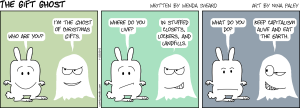
3. Choose Your Visitors
To survive the holidays, choose your visitors and visits carefully. But please, as a special favor to me, include grandparents in your holidays. I speak both as a grandmother and as person who misses her own dearly departed parents and grandparents. I also speak as a person who believes that family togetherness is a core purpose of holidays. Whatever you do, though, remember that you have the power to make your own visitor and visit choices from among your family and friends. Here’s a comic I created to help you with your choices:
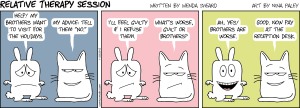
4. Choose Your Decorations
If you have children, they might insist on holiday decorations. You, on the other hand, might remember the work involved in decorating and later taking down decorations. You have a choice to make here. You can decorate, or you can ban decorations, or, surprise: you can allow your children to do all the decorating. If you don’t trust your children to take down the decorations in a timely and tidy manner after the holidays, I suggest you require a decoration deposit.
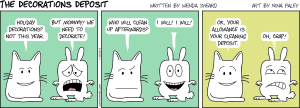
5. Choose Your Food
I’m guessing you don’t want to gain weight or live with sugared-up children bouncing off the walls this holiday season. Right? If so, you have choices to make. And those choices start with your grocery list. Here’s the thing: If you don’t bring sugary treats into your home, you and your children won’t eat them.
Instead of splurging on holiday treats, how about splurging on those nutritious items that cost more than you’re usually willing to pay? Go ahead, buy the ingredients for the salad of your dreams, or the fruit arrangement of your wildest imagination. I promise your kids will survive. Who knows, they might even enjoy your nutritious grocery store splurges!
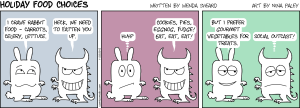
6. Choose Your Events
You have the choice to decline holiday invitations. Invitations are choices, not commands. You don’t need to attend zillions of holiday events. Except, of course, if the events include your children. Then sorry, you’re stuck. There’s simply no escaping school holiday concerts and piano recitals involving your kids, except, maybe via earplugs.
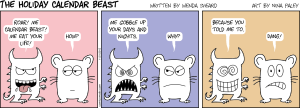
Conclusion
Let’s all aspire to serenity-filled, relaxing holidays. We have the power to choose how much to strip our holidays naked, down to their relaxing cores. I leave you with this holiday prayer:

Acknowledgements and Credits
I created the comics via the Comic-O-Matic website of Nina Paley and Margo Burns. (Thanks!)
This blog article is part of the Hoagies’ Gifted Education Page December 2015 Blog Hop on Surviving the Holidays. I thank my friends at Hoagies’ Gifted Education Page and elsewhere for their inspiration, support, and suggestions.
Please click on the graphic below (created by Pamela S Ryan–thanks!) to see to the titles, blog names, and links of other Hoagies’ Blog Hop participants.
How to Help Smart and Confused Kindergartners: With Comics!
Posted: November 1, 2015 Filed under: Uncategorized | Tags: acceleration, gifted, homework, kindergarten, smart 13 CommentsIn this article, I offer comics illustrating what some smart kids feel during kindergarten and later school years. You’re welcome to use the comics to start dialogues with your children. Perhaps ask if the situations depicted in the comics have ever happened to them. Perhaps ask how the characters in the comics could have handled the situations differently.
I hope you learn as much from discussing these comics with your children as I learned recently while discussing the comics with my favorite kindergartner.
The Squishing
Kindergartners everywhere begin school with high expectations for learning. Unfortunately, some who burst at the seams with curiosity and knowledge soon feel that good behavior counts more than good learning in kindergarten.
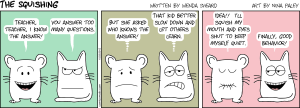
When I showed this comic to my favorite kindergartner, the sarcasm and irony of the comic escaped her. Instead, we discussed how the teacher and the student could have handled the situation differently. We also discussed how teachers try to give all students equal time, and how if a child ever feels left out, the child should share those feelings with the teacher and with the child’s parents.
I believe my favorite kindergartner benefitted from our discussion. It’s good for children to know it’s ok to talk to teachers and parents about feelings. It’s also good for children to understand classroom dynamics not just from their own points of view, but also from the teacher’s point of view.
The Homework Conscience
I was surprised to learn that my favorite kindergartner occasionally has homework. Yes, paper and pencil homework, complete with due dates.
That’s not the kindergarten of my youth, nor the kindergarten of my children’s youth, but what can I do? Nothing much, except create this comic for sparking discussion:
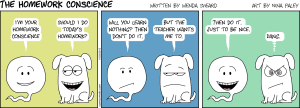
When I showed this comic to my favorite kindergartner, we first had to discuss the concept of conscience. Thanks to Jiminy Cricket of Pinocchio, we mastered that concept sufficiently to move on.
Next, we discussed the purpose of education–learning! When and if any homework feels like an unnecessary burden to my favorite kindergartner, she now knows to politely and respectfully discuss the matter with her teacher and parents.
I’ll leave it to those adults to figure how to respond to a polite and reasonable young voice trying to buck an entrenched feature of educational institutions worldwide. Yes, that’s a tall order.
Hopefully the adults in question will encourage the child’s advocacy efforts, will release her from doing truly unnecessary homework, and, at the same time, will teach her that in life it is sometimes easier to “just do it” rather than argue the merits of orders handed down from above.
The Jumping Donkey
A long time ago, a teacher told me that my then six-year-old child hurt said teacher’s feelings by enthusiastically finding a flaw in a math problem that the teacher created for enrichment purposes.
I explained to the teacher that my child meant no harm, but was overjoyed that she knew enough to find the flaw in the problem. I complimented the teacher for giving my child the challenge. At the same time, I agreed to talk to my child about the teacher’s feelings. Crisis averted.
I created the following comic to give parents and children a chance to discuss what can happen when a child’s display of learning disappoints a teacher.
As an added bonus, the comic gave me a chance to discuss the word “jackass” and its double meaning with my favorite kindergartner. She not only enjoyed the vocabulary lesson, but also enjoyed knowing that she’s not the only kindergartner who is sitting through a year of learning letters and letter sounds that she learned years ago.
Notice that the teacher in the comic interrupted the child’s wandering mind? If you share this comic with your own child, be sure to read Ode to Positive Constructive Daydreaming published in Frontiers of Psychology. The lead author, Rebecca McMillan, is a wise friend of mine who realizes the value of mind wandering. Bottom line: mind wandering time is not wasted time.
Conclusion
Please let me know if the comics spark discussions in your household. I love to hear from readers about how my work might have helped others.
If you and your children want to explore options for accelerating their learning, you might enjoy reading a major report released last spring. The report, A Nation Empowered: Evidence Trumps the Excuses Holding Back America’s Brightest Students, “informs educators, parents, and policy makers of current research on acceleration, how that information has been applied to educational policy throughout the nation, and how educators can use the findings to make decisions for their brightest students.” I highly recommend the report and its predecessor, A Nation Deceived.
Deleted “Scenes”: Bedsheet Math
I deleted this comic from the main part of article for two reasons. First, the comic is about older children, not kindergartners. Second, a friend of mine who previewed the comic suggested that not many people would understand it.
But here’s the thing—it really happened!
The cartoon recounts a conversation that occurred while I sat with one of my children in the headmaster’s office of a private high school. Although my child was cool as a cucumber during the headmaster’s absurdity, I vowed to make sure my child would have the opportunity to learn calculus, with or without a hands-on calculus curriculum. (Mission accomplished.)
I created the comic because I want to warn parents that sometimes educators who tout hands-on-learning fail to understand that once kids grasp concepts, the hands-on-learning of those same concepts becomes unnecessary. Please, please, do not let educators convince you that educational methods can substitute for academic content. Both method and content are important, but substituting bedsheets and sledding hills for calculus? No way.
Acknowledgements and Credits
I created the comics via the Comic-O-Matic website of Nina Paley and Margo Burns. (Thanks!)
This blog article is part of the Hoagies’ Gifted Education Page November 2015 Blog Hop on Ages and Stages of Giftedness. I thank my friends at Hoagies’ Gifted Education Page and elsewhere for their inspiration, support, and suggestions.
Please click on the graphic below (created by Pamela S Ryan–thanks!) to see to the titles, blog names, and links of other Hoagies’ Blog Hop participants.
GRO: Discovering The Depth and Breadth of Intelligence
Posted: October 19, 2015 Filed under: Uncategorized | Tags: asynchronous development, cognitive neuroscience, gifted, gifted advocacy, intelligence, neuroscience, terman 11 Comments What happens when a neuroscientist, a psychotherapist, an aerospace manager, an organizational behaviorist, and a public policy specialist get together? They raise money and begin an ambitious research effort to examine the sensory, cognitive, metabolic, physiological, neuroanatomical, neurochemical, and genetic characteristics of individuals with high intelligence.
What happens when a neuroscientist, a psychotherapist, an aerospace manager, an organizational behaviorist, and a public policy specialist get together? They raise money and begin an ambitious research effort to examine the sensory, cognitive, metabolic, physiological, neuroanatomical, neurochemical, and genetic characteristics of individuals with high intelligence.
Gifted Research & Outreach (GRO), a new 501(c)(3) nonprofit organization based in California, has begun research and outreach on a multidisciplinary level not seen since 1925 when Louis Terman and others published Mental and Physical Traits of a Thousand Gifted Children. In the preface of that volume, Terman wrote:
Our positive knowledge of the physical, mental, and personality traits of such children has been extremely limited, and until this knowledge is available there can be no basis for intelligent educational procedure.
When Terman and colleagues examined 1,000 gifted children nearly a century ago, scientists lacked fancy computerized tools for looking inside brains. Examinations of metabolism, hormones, enzymes, gut bacteria, the endocrine system, and the central nervous system were similarly limited. Today, with medical technology unimaginable a century ago, scientists can better examine the mental and physical traits of gifted children, and can link physiology to psychophysiological reactions and behavior in all children.
Despite the existence of new medical technology, our knowledge of the physical, mental, and personality traits of children with high intelligence is still limited. Although Terman craved that knowledge primarily for purposes of “intelligent education procedure,” today we crave that knowledge not just for educational purposes, but also for social, emotional, and medical purposes.
GRO’s Multidisciplinary Efforts
 GRO plans a multidisciplinary effort to research the depth and breadth of intelligence. GRO will then share its research results through open access articles, through outreach efforts targeting parents and professionals, and through writings easily accessible to the general public. The two prongs of the GRO mission–research and outreach–are equally important, according to those involved with the new organization.
GRO plans a multidisciplinary effort to research the depth and breadth of intelligence. GRO will then share its research results through open access articles, through outreach efforts targeting parents and professionals, and through writings easily accessible to the general public. The two prongs of the GRO mission–research and outreach–are equally important, according to those involved with the new organization.
The founders of GRO share Terman’s belief that a multidisciplinary approach is necessary for studying children of high intelligence. Psychotherapist Dr. Joanna Haase, who has 28 years of experience working with gifted individuals and their families, explained, “Many psychological theories touch on the physiological, but with our current trend to medicate children as a first response, we need to be very careful to understand what is ‘normal’ in the physiological and psychological make up of gifted children. It is only by having a full and integrated understanding of the ways the brains and bodies of these children differ or do not differ from the norm that we can offer effective support and interventions for gifted children and their families.”
The GRO founders believe that understanding all aspects of highly intelligent individuals will help us understand neurodiversity. Organizational behaviorist Sharon Duncan emphasized, “The fact is that much research has been done on the physiology and psychology of individuals with developmental delays, but not enough research has been done on individuals on the other end of intelligence spectrum. The study of outliers helps us increase our knowledge of all humans. As a society aspiring to an unbiased body of research, we should not allow charges of elitism to dissuade us from studying highly intelligent individuals.”
Dr. Haase agreed that by learning more about the brains and bodies of people with high intelligence, we’ll learn more about everybody. Dr. Haase explained that AIDS research taught us not only about AIDS, but also taught us about medicine in general and about social behavior. She notes that we grew as a society as a result of insights gained during the AIDS research effort.
Barmazel noted: “Many children have experienced problems in school because their behavior was brought into question rather than understanding that their physiological needs were not being met. For example, a child may be labeled with oppositional defiant disorder (ODD) when he or she holds their hands over their ears. It may be perceived that the child doesn’t want to listen when if fact they are protecting themselves from the pain of noise. When a child is repeatedly punished for self-protection, he or she can become confused and resentful and turn into a behavioral problem. Arming parents, educators and psychological professionals with knowledge and tools to address such behaviors would contribute to a better academic experience.”
GRO’s Research Efforts
Neuroscientist Dr. Nicole Tetreault, GRO’s Director of Research, specializes in neurodevelopment and neurodegenerative disorders. Her prior research efforts include studies in autism, the sensory impairments in Parkinson’s disease, and the development of the visual system. Her experience examining sensory and other physiological correlates of neurological conditions matches GRO’s efforts to find correlations and possible causal links between the brain and other aspects of human physiology.
Dr. Tetreault is close to completing Phase 1 of GRO’s research work. For Phase 1, Dr. Tetreault used her neuroscience background to conduct an extensive literature review of research on the brain and on the genetics of highly intelligent individuals compared to those of general intelligence. The results of the Phase 1 literature review will be posted on the GRO website in the near future.
Phase 2 will involve an in-depth review of literature of the potential associations between high intelligence and allergies, metabolism, hormones, social anxiety, autoimmune diseases, and gastrointestinal dysfunction. Those results will be posted on the GRO website after Phase 2 is complete.
GRO decided to perform its literature review of the brain and genetics first for two reasons. One reason is that brain and genetics research articles are plentiful and well validated. Another reason is that the brain is the source of human cognition.
As part of her Phase 1 research efforts, Dr. Tetreault met with leaders of intelligence research from around the world including Richard Haier, Robert Colom, Timothy Bates, and David Lubinski. She also recently attended a talk by Robert Plomin. She plans to communicate with other scientists as GRO’s research efforts proceed.
When interviewing GRO members for this article, I was happy to learn that GRO, for its outreach purposes, currently uses the Columbus Group’s 1991 asynchronous development definition of giftedness. As I expected, most of the studies that Dr. Tetreault reviewed during Phase 1 of GRO’s research used traditional measures of intelligence such as the WISC, WAIS, and Ravens tests. Using the traditional measures will allow GRO to integrate data across multiple studies and disciplines. Because many factors beyond intelligence can contribute to an individual’s achievement, Dr. Tetreault was careful not to use studies that relied on measures of achievement to determine intelligence.
GRO’s Outreach Efforts
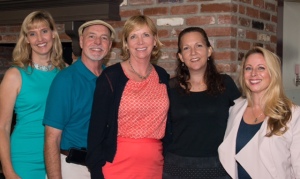 The five people involved with GRO bring an impressive variety of credentials and experience to the organization. Dr. Haase and Dr. Tetreault bring their experience in the fields of psychotherapy and neuroscience, respectively. Marc Montgomery, GRO’s Board Chair, brings 35 years of aerospace leadership to GRO. Michelle Barmazel, GRO’s Director of Development, brings an understanding of public policy, business administration, and nonprofits. Sharon Duncan, GRO’s organization behaviorist, worked for 26 years at NASA’s Jet Propulsion Laboratory (JPL) in project and line management positions.
The five people involved with GRO bring an impressive variety of credentials and experience to the organization. Dr. Haase and Dr. Tetreault bring their experience in the fields of psychotherapy and neuroscience, respectively. Marc Montgomery, GRO’s Board Chair, brings 35 years of aerospace leadership to GRO. Michelle Barmazel, GRO’s Director of Development, brings an understanding of public policy, business administration, and nonprofits. Sharon Duncan, GRO’s organization behaviorist, worked for 26 years at NASA’s Jet Propulsion Laboratory (JPL) in project and line management positions.
GRO intends to communicate complex technical and scientific ideas to general audiences. As GRO moves forward, research results will dictate the direction of GRO’s outreach efforts. Dr. Haase hopes to share GRO results not only with educators, but also with doctors, psychologists, psychiatrists, occupational therapists, speech therapists, allergists, and other practitioners. She explained, “GRO wants to take conversations about giftedness to practitioners who run across gifted individuals.”
In the spring, members of GRO, working with a southern California university, are planning to conduct a continuing education conference for psychologists, school psychologists, and other professionals about misdiagnoses and other issues affecting gifted individuals. At the event, Dr. Haase will explain how gifted children sometimes experience intense emotions and existential depressions at early ages. According to Dr. Haase, “Because those emotions don’t disappear with age, practitioners need to help children understand that those emotions are part of who they are, and help them learn how to manage their intensity across their lifespan. Medication is not always a bad intervention, but it should not be the first and only one.”
Duncan acknowledged that although we have anecdotal and case study evidence of the emotional, sensory, imaginational, intellectual, and physical intensities of gifted children, the scientific evidence has not been fully developed, integrated, and disseminated. Duncan believes that GRO’s future research will shed light on what those who work with gifted children have observed. She explained, “Parents often report that their gifted children behave and react differently than their age mates, yet there is little physiological research to support why this is. On a practical level this information will help parents obtain effective social, emotional, and educational assistance for their children.”
Dr. Tetreault hopes that GRO’s research and outreach efforts will provide a map for parents who have precocious children, and help parents learn how to keep their children growing and how to be within their rights to do whatever their little bodies need to be doing while learning. Dr. Tetreault aspires to provide parents and educators with the support they need to give children opportunities to succeed. She notes that in light of the current trend toward standardization in education, “it’s very important for every child’s healthy development that we be able to identify and satisfy their needs.”
Through her research into autism and other neurobiological disorders, Dr. Tetreault has learned that physiological differences often accompany neurobiological disorders. For example, some individuals with autism experience gut issues, some individuals with dyslexia experience nausea, and a subset of individuals with Parkinson’s experience olfactory impairments. In the same vein, GRO hopes that its research on the physiological differences that accompany high intelligence will help us learn more about all people.
Bring GRO to Your Neighborhood
On December 13, 2015, GRO members will travel to Santa Monica, California for a dinner to raise funds for Phase 2 of GRO’s research plans If you are interested in attending the dinner and hearing the results of GRO’s Phase 1 research, contact GRO as soon as possible for a reservation. If you would like host a GRO fundraising dinner in your community, please let GRO know. GRO members, including neuroscientist Dr. Tetreault, are willing to travel. The GRO website includes this contact form.
A Personal Note
As gifted advocate with over three decades of experience, I recall a watershed moment at the Texas Association for the Gifted and Talented conference about 15 years ago. One session title in particular drew me to Houston: The Neurobiological Correlates of Intelligence. At the time, I was hungry to hear scientific evidence of what others insisted was a mere “social construct.” I went to Houston remembering the near blackout of anger I experienced a few years earlier at a general education conference in Ohio as I sat in shock while listening to a presenter tear apart the very existence of gifted children.
The presentation room in Houston overflowed with people hungry for scientific evidence that gifted children exist. People sat on chairs, sat on the floor, and leaned against the walls. Still other people packed themselves tightly far into the hallway, straining to listen. The presenter spoke for noticeably longer than her allotted time, but few moved a muscle. We were thrilled to learn that researchers had started to find correlations between high intelligence and certain brain characteristics.
I believe that GRO’s scientific research and outreach missions will go a long way towards improving public and political opinion about the unique needs of children with high intelligence, as well as about the links between the brain and physiological conditions. Please join me in supporting GRO’s efforts.
Acknowledgements
I thank photographer Steve Duncan of Avian Resources for granting permission to use the photograph he took of the Milky Way. For more of Steve’s stunning images, see http://avian-resources.artistwebsites.com/
I could not have written this article without the generosity of the GRO Board of Directors. They granted me interviews, reviewed drafts of this article, answered all my questions about their research efforts, and provided me with a photograph of the five of them to include in this blog. Thank you!
Lastly, I thank my friends at Gifted Homeschoolers Forum for their inspiration and support, both online and in person. Although my children are all grown, I’ve written this article as part of the October 2015 Gifted Homeschoolers Forum Blog Hop. Clicking on the graphic by Tara Hernandez (Thank you, Tara!) below will lead you to the titles, blog names, and links of other Blog Hop participants. Thank you for supporting my fellow blog hoppers by visiting their blogs.








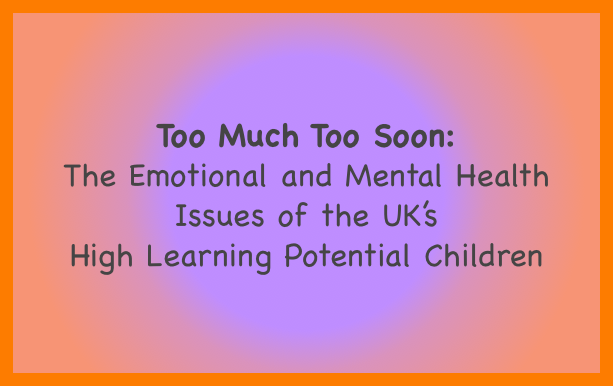

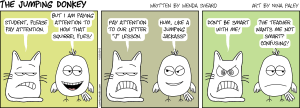
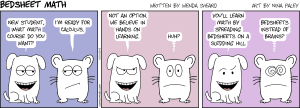


Recent Comments